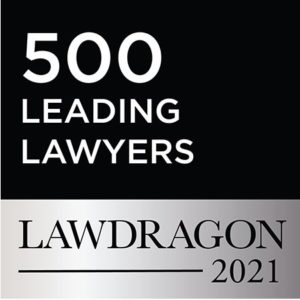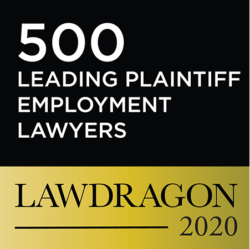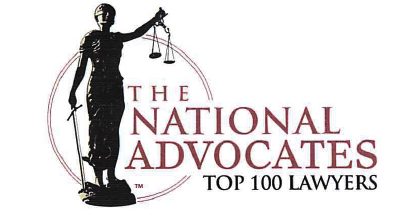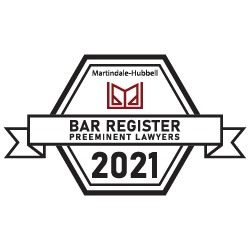Athletes know the sound—that gut-wrenching pop right before you collapse. A sudden pivot, when your knee and leg misalign, normally precedes the tear. Torn ligaments are one of the leading and most painful causes of knee injuries. You may require a knee replacement or ligament surgery after a severe injury, both of which could keep you from performing the important duties of your occupation for a significant period of time.
Even if you’re not an athlete, car accidents commonly cause disabling knee injuries. Rear-end crashes may cause your knees to hit the dashboard and fracture. An inability to drive or walk around your office may leave you unable to perform the important duties of your occupation.
Knee pain is the leading type of joint pain and stiffness in the United States, with about 20 percent of American adults reporting they suffer from knee pain.
Some individual and group long-term disability claimants have suffered from knee pain since childhood that keeps getting worse as they age. Some claimants have delayed a necessary knee replacement surgery, and still others were suddenly injured in some type of accident.
America’s top-rated long-term disability lawyers and award-winning ERISA attorneys at DarrasLaw evaluate tens of thousands of individual and group long-term disability cases each year, including thousands of knee injury, knee replacement, and knee surgery cases. You’re not alone if a disabling knee injury or degenerative problem leaves you unable to work. Call DarrasLaw today at 800-898-7299 or contact us online to schedule your free disability policy analysis and free claim consultation.
Anatomy of the Knees
Your knees primarily function as the joint that connects your femur (the thigh bone) to your lower leg bones (the tibia and fibula). Your knee is also the most complex joint in your body, consisting of bones, ligaments, tendons, fluid-sacs, and cartilage that work together to help you walk. The four main ligaments in your knee include:
- Anterior cruciate ligament (ACL) – This ligament is located in the front of your knee and connects your femur to your tibia. It’s responsible for controlling the forward movement and rotation of your lower legs.
- Posterior cruciate ligament (PCL) – This ligament is located on the outer back of your knee and controls backward movement. Your PCL and ACL cross in the center of your knee.
- Lateral collateral ligament (LCL) – This ligament sits on the right-hand side of your knee and connects your femur to your fibula. It prevents your femur from shifting to the right side.
- Medial collateral ligament (MCL) – This ligament sits on the left-hand side of your knee and connects the femur to the tibia. It prevents the femur from sliding to the left.
Your knee also consists of:
- Medial and lateral meniscuses – Cartilage that sits on your tibia and prevents your bones from rubbing together as you move and walk.
- Bursae – Small, fluid-filled sacs that counteract the friction of your joints, help smooth movement, and absorb shock.
- Patella (knee cap) – This freestanding bone rests between your upper and lower leg. It essentially allows you to bend your knee.
It goes without saying, but you need your knees to walk. Your ligaments, kneecap, and bursae must work together to move. Damage to any part of the knee can result in extreme pain and an inability to move and perform the important duties of your occupation.
Conditions Affecting your Kneecap
The three primary types of knee injuries include fractures/bone damage, ligament/cartilage damage, and arthritic conditions.
Some conditions make walking more difficult, while others make it impossible. The following knee conditions commonly damage your patella and nearby bones:
- Patellar subluxation (dislocation) – This condition can occur when your kneecap moves abnormally or dislocates during activity. This causes pain and difficulty with movement. This instability can result from genetic factors, such as a large pelvis or deformities in the knee, or an abnormal gait.
- Patella fracture (broken kneecap) – Patella fractures occur when your patella chips or breaks. They typically happen when you fall directly on your knee, or it hits something with great force, such as the dashboard during a car accident. Patella fractures often result in bone chips that move out of place and through the knee. Your knee may heal, but you may require surgery to remove these bone fragments.
- Femur, tibia, or fibula fractures – Leg bone fractures will damage your ability to use your knees. Your knees are connected to your leg bones, and should function as one unit.
Your kneecap helps you walk by sliding down grooves in your lower leg. Any damage to your kneecap that causes it to swell or any deformity in these grooves can hurt your ability to reliably walk.
Arthritis and Related Knee Conditions
Knee arthritis, which means inflammation of the knee, is the most common cause of knee pain. It’s also the most difficult to claim individual and group long-term disability benefits for, because arthritis is often use- or age-related. Most of the many different types of knee arthritis, however, are not related to age.
- Knee osteoarthritis – This typical arthritis is the most common cause of knee pain. Osteoarthritis of the knee often results from age and natural wear which tears the cartilage, and can cause inflammation, swelling, pain, and discomfort.
- Patellofemoral syndrome – This irritation of the cartilage behind the kneecap causes knee pain. It’s common in younger patients, so not all knee pain is age-related.
- Knee effusion – The inflammation from arthritis commonly causes fluid to build up in your knee, leading to stiffness and pain.
- Tendonitis – Any of the tendons in your knee, including the tendon that connects your kneecap to your lower leg, can become inflamed. Tendonitis is often classified as a use-related injury, as it develops with time. This is especially true if you engage in repetitive jumping and bending motions.
- Rheumatoid arthritis – Rheumatoid arthritis is an autoimmune disorder that occurs when your immune system attacks your joint. Your knee is a large joint and is especially susceptible to rheumatoid arthritis. Constant immune system attacks on your knee cause damage to knee cells, swelling, pain, and stiffness.
- Gout and pseudogout – Gout and pseudogout are types of arthritis caused when uric acid crystals build up in your knee. Gout causes extreme pain, stiffness, and swelling during episodes of inflammation. Pseudogout is similar but results from the buildup of calcium pyrophosphate crystals.
- Septic arthritis – Septic arthritis is a rare but serious form of arthritis caused by an infection, including fungus, a virus, or bacteria inside your knee. Septic arthritis causes extreme pain and difficulty with movement and requires treatment to prevent the infection from spreading.
Successfully claiming individual or group long-term disability benefits for arthritic conditions requires following a series of complicated steps. Anyone considering doing so should immediately consult an experienced claim disability attorney or top-rated ERISA lawyer at DarrasLaw.
Traumatic Knee Injuries and Ligament Damage
Many knee injuries result from ACL, MCL, PCL, and meniscus tears. That pop an athlete hears when landing wrong is potentially a serious ligament tear or detachment. The following ligament injuries may result in disability:
- ACL tears – Because the ACL is a strong ligament that runs diagonally across your knee, these injuries produce tremendous pain. ACL tears are often seen in athletes or after traumatic falls. These tears can range anywhere from Grade 1, which is a mild sprain, to Grade 3, which is a complete ACL tear. You’ll need corrective surgery for an ACL tear and months to rehabilitate. You may need to take more than a year off from work.
- PCL, MCL, and LCL tears – These ligaments are also susceptible to injury. They are less common than ACL tears because they’re not in front of the knee. Athletes who land awkwardly or engage in specialized movements may suffer from a PCL, MLC, or LCL tear.
- Torn meniscus – This is the medical term for when you tear the cartilage in your knee that pads your leg bones. Tears can occur due to a traumatic injury, which is also very common in athletes. Age is also a factor—the older you get, the dryer and weaker your cartilage becomes. As cartilage wears down with time, it’s easier to suffer a meniscus tear. Some tears heal on their own, but serious tears may require surgery.
Ligament tears are extremely painful and may prevent you from walking and performing the important duties of your occupation. You may require surgery and months of rehabilitation to repair serious ligament damage. This can leave you unable to perform the important duties of your occupation and qualify you for individual or group long-term disability benefits.
Knee Surgeries and Replacements
Short-term disability benefits typically cover claimants undergoing routine surgery. C-sections, bunion surgeries, and laparoscopic surgeries without complications typically require a six-week recovery time.
Knee surgeries are different. The knee is such a vital joint that you may need many months to recover before you begin intense rehabilitation. The following knee surgeries commonly cause disabilities:
- Meniscus repair and meniscectomy – Sometimes surgeons only need to trim a torn meniscus to relieve your symptoms. This is called a meniscectomy. This surgery is minimally invasive and has a quicker than average recovery time. For more serious tears, you’ll need a meniscus repair, which is more invasive. Meniscus repairs require longer recovery times.
- ACL reconstruction – An ACL reconstruction typically requires a tendon graft from a donor or another area of your body. Your surgeon can create a new ACL and will create grooves in your tibia and femur to insert this new ligament. The new ligament is then fixed to your bones. This surgery creates a new, stronger ligament and can help restore your knee.
- Lateral release – Kneecap dislocations are often treated with lateral release surgery. During this procedure, surgeons loosen the ligaments attached to your kneecap to allow it more space to fit into its grooves.
The most serious knee injuries require knee replacement or partial knee replacement surgeries, for which patients face significant recovery times:
- Partial knee replacement – Serious cases of arthritis often require this surgery. Sometimes a specific area of the knee is damaged, and surgeons need replace only that portion of the joint.
- Full knee replacement – Patients with serious arthritis may need a full knee replacement. During this procedure, the bones and cartilage of your knee are removed and replaced by metal or plastic implants and functions as a new knee.
Knee replacement patients may find individual or group long-term disability benefits difficult to obtain as most carriers believe three months is adequate recovery time to return to work. At DarrasLaw, we can work with you and your treating doctors to fight wrongful delays, denials, and terminations of individual or group long-term disability benefits based on the compelling medical evidence and proof. Genetic deformities, autoimmune disorders, traumatic injuries, and infections necessitating knee surgery may qualify you for individual or group long-term disability benefits.
Contact the Award-Winning Long-Term Disability Lawyers and Top-Rated ERISA Attorneys at DarrasLaw to Discuss your Case
If you’re working, you’re probably walking. If you are suffering from knee pain, you might also find walking difficult or impossible. We rarely realize how important a knee is until it begins to fail. Knee and ligament replacement surgeries are extremely successful, and surgeons can help restore your ability to function, walk, and work without pain.
It takes time to prepare for knee surgery. You may miss months of work between the original injury and surgical preparations, and then you’ll need to fully recover from surgery before you begin rehabilitation. This may leave you unable to perform the important duties of your occupation and necessitate obtaining individual or group long-term disability benefits. Remember, insurers typically flag knee claims as deniable, so you may find obtaining individual or group long-term disability insurance coverage challenging.
At DarrasLaw, America’s top-rated long-term disability lawyers and nationally experienced ERISA attorneys can analyze the facts of your case and help you fight wrongful delays, denials, and terminations of individual and group long-term disability benefits. With more than 100 years of combined litigation and claim experience in the disability field, DarrasLaw has evaluated thousands of knee replacement and injury cases. Call us today at 800-898-7299 or contact us online to schedule your free disability policy analysis and free claim consultation.
Testimonial
Review: 5/5 – ★ ★ ★ ★ ★
“Thank you to all there at DarrasLaw Firm. Sharon and I are so grateful to all of you for being there for us and for bringing some good news to this whole nightmare. Please extend my Thanks to Nick who first visited with us, Candace, Vicki and Mr. Darras as well. You are all a wonderful team and words really can not say enough.”
– Mike P.
Get Help With Your Disability Claim
DarrasLaw can take care of your insurance claim so you can focus on managing your injury or illness. Call us today at 800-898-7299 or email us to schedule your free consultation.













